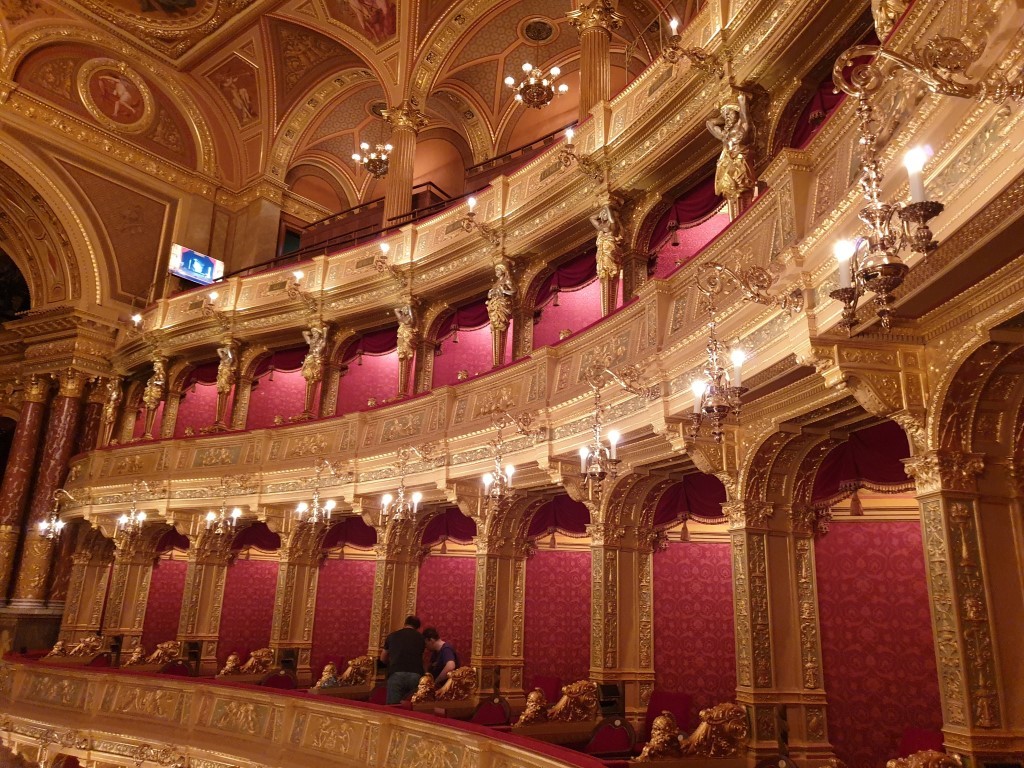After almost 5 years of closure, the Hungarian State Opera House in Budapest has returned to its former glory and opened its gate to the delight of opera fans on March 12, 2022. It is esteemed as one of the most beautiful European opera venues both outside and in, this structural masterpiece was renovated with careful attention to every detail.
The complete renovation of the Neo-Renaissance palace began in 2017 under the direction of architect Gábor Zoboki. The central challenge of the building’s restoration plans was adhering to Miklós Ybl’s original blueprints and architectural esthetics, but at the same time upgrading the technical equipment and audience needs to a 21st century level.
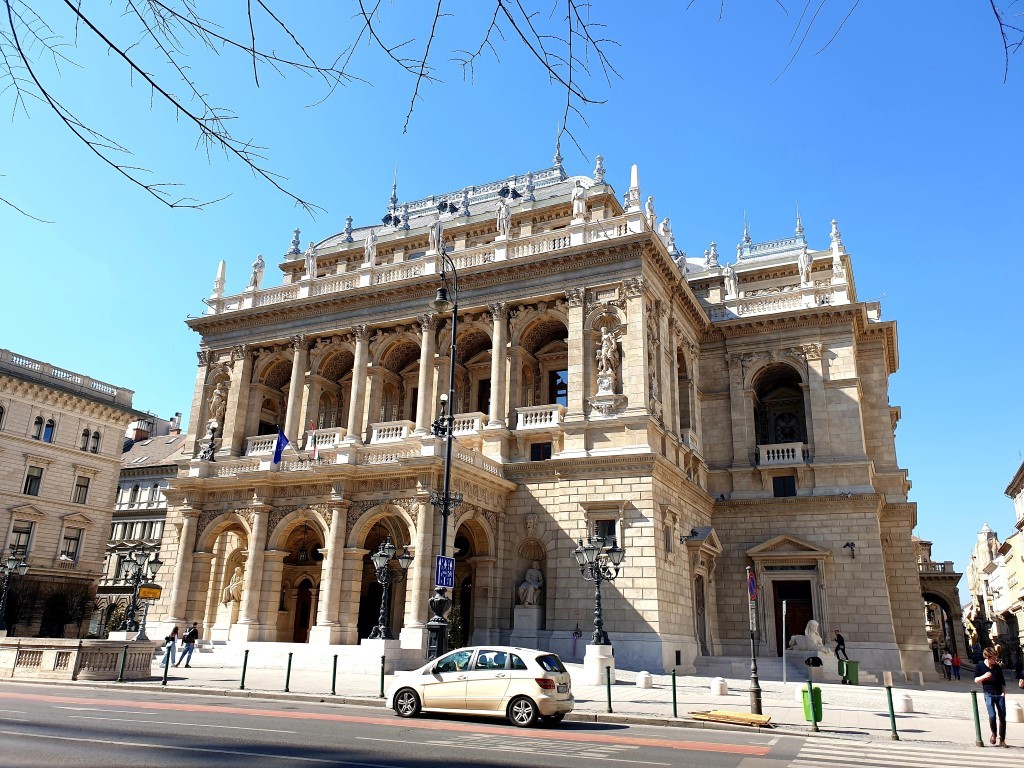
The public investment included the restoration of the façade, the modernization of stage technology, the improvement of the acoustics and the comfort level of the spectators, the conversion of the orchestra trench, the restoration of the monumental decorations, the replacement of the Opera House’s utility network, renovation of the factory building and workshops.
A little history of the Opera House in Budapest
The Hungarian State Opera House in Budapest has an extensive history and remarkable architectural design, making it one of the most amazing landmarks in Budapest.
The neo-Renaissance Opera House was built between 1875 and 1884, and designed by the architect Miklós Ybl (designed multiple buildings in Budapest like St. Stephen’s Basilica), a major figure in the 19th-century Hungarian architecture scene.
It was a time when Franz Joseph I was Emperor of Austria and King of Hungary. Going to the opera was a great social occasion not only for the elite of Budapest society but for the Empress Elizabeth of Austria, Queen of Hungary (fondly known as “Sissi”). Franz Joseph I only allowed the construction with the condition that the Opera House in Budapest does not exceed the size of the Opera House in Vienna.
Therefore the architect did away with the highest level of boxes and reduced the size of the lobby. However, the basic artistic approach did not change: both the architecture and the decorations intend to express the power of music, the latter with the help of stories from antique mythology.
This famous Mecca of European opera was finally inaugurated on September 27, 1884. Sissi loved visiting the Opera House in Budapest and preferred sitting in the proscenium box (called “Sissi box”), just to the left side of the stage. It is so nice and private, hidden from prying eyes.
Click HERE to read the full history of the Hungarian State Opera in Budapest.
Guided Tours in the Opera House
Some people like listening to classical music or opera, while others prefer jazz, rock, pop, rap or soul. Opera used to be more popular in the previous centuries than it is nowadays, but you don’t have to be an opera fan to visit the Opera House in Budapest. There are guided tours available in multiple languages every day. This allows you to admire the architecture and learn all about the building’s history.
To get my daily dose of culture I attended an English language guided tour right after the reopening of the Opera House in March. During the 1-hour guided tour I not only learnt many interesting facts about this magnificent masterpiece of Budapest but I had the chance to take instagram-worthy photos of the revamped building.
The Foyer
Spending time in the rich colors of the foyer, decorated with Italian marbles, allows you to really get in the mood for some special musical experiences…
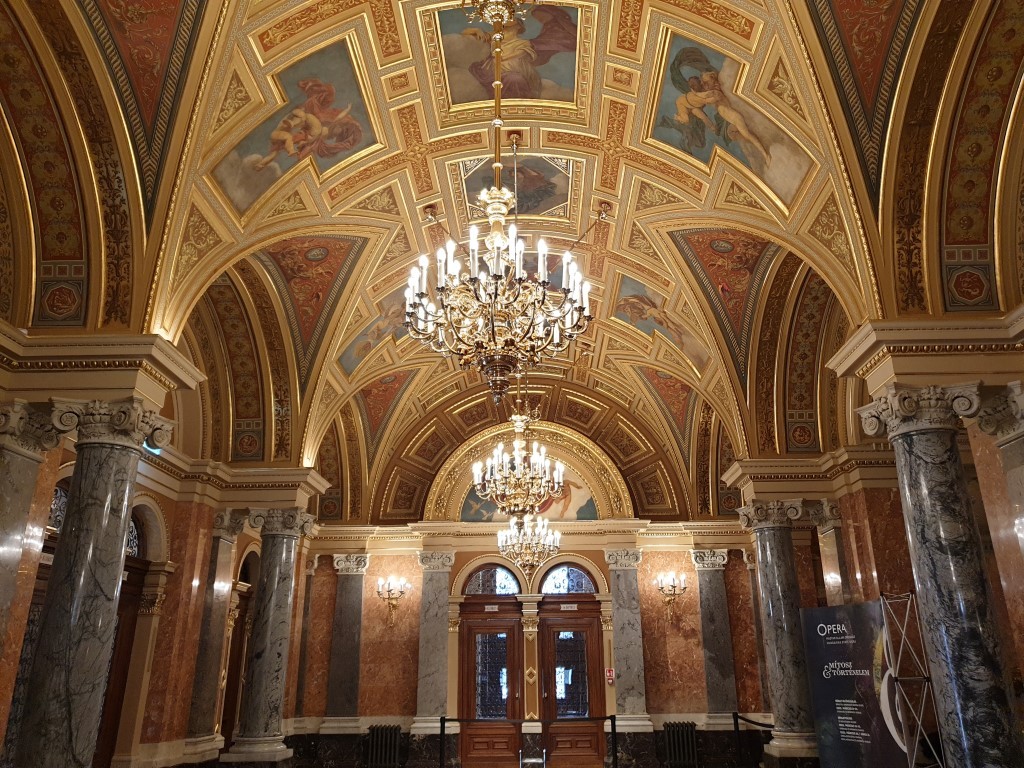
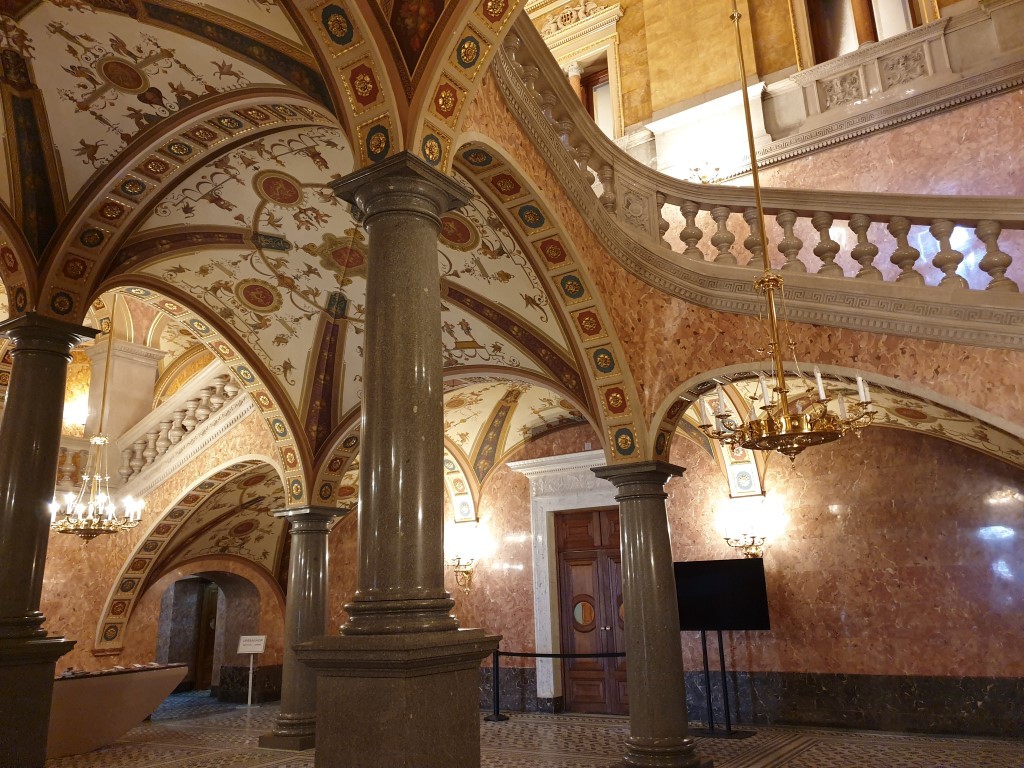
The Grand Staircase
The grand staircase is one of the most impressive aspects of the Opera House. It is heavily ornamented with gold decorations and marble pillars. The wrought-iron lamps provide a remarkable atmosphere inside the building. One thing is for sure. The abundance of the red-carpeted grand staircase and glittering facades will make your jaw drop.
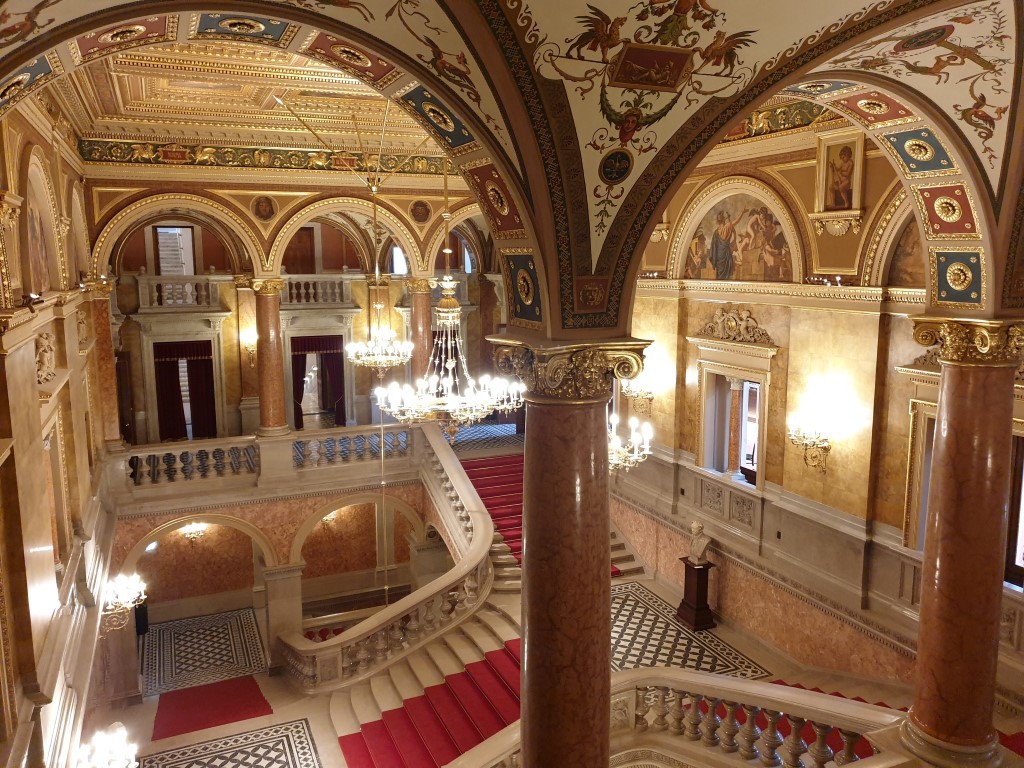
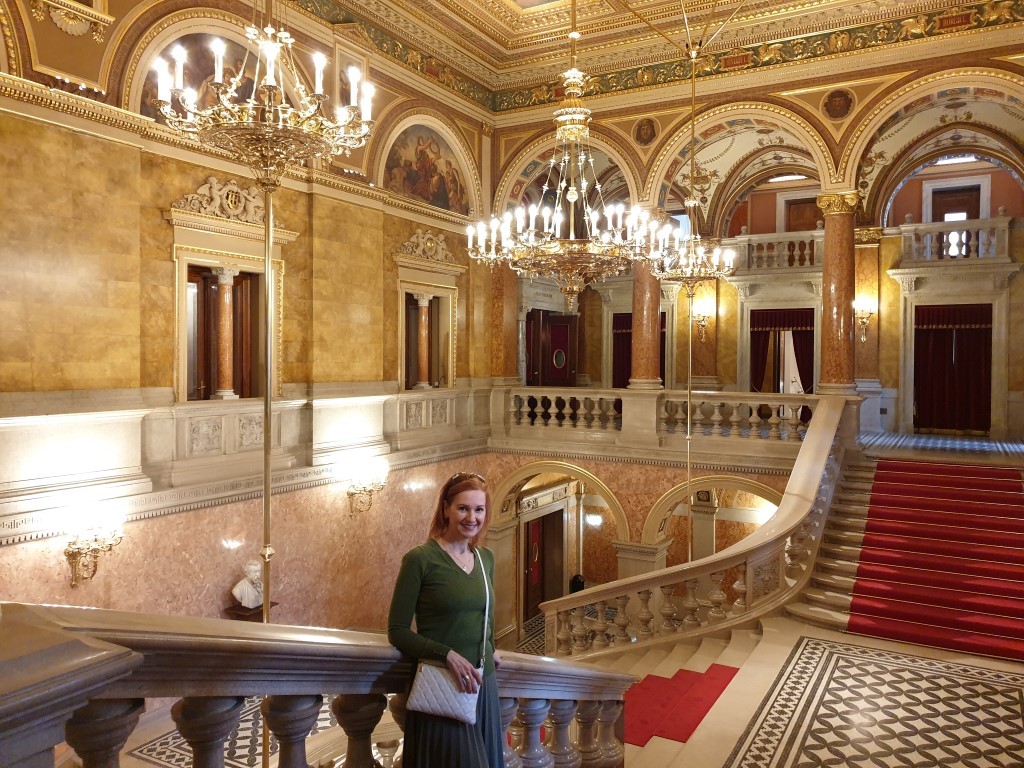
Auditorium
The horseshoe-shaped Auditorium of the Opera House in Budapest, with a capacity of 1261 places, has the third best acoustics in Europe, according to sound measurements.
The horseshoe-shaped auditorium is not only praised for its impeccable acoustics but also features one of the most stunning chandeliers you’ll ever come across. This bronze chandelier weighs over 3 tonnes and illuminates the magnificent ceiling of the hall. This ceiling features a fresco that depicts the Greek gods on Mount Olympus and was painted by a German-Hungarian artist named Károly Lotz.
The Royal Staircase
The Royal Staircase leads up discreetly from the street to the parlors on the 1st floor. Franz Joseph I and Queen Sissi have trod the very steps that lead up to the salons on the first floor. There’s a famous mirror standing atop the stairs. Legend has it that Queen Sissi loved this mirror because it made her look thinner.
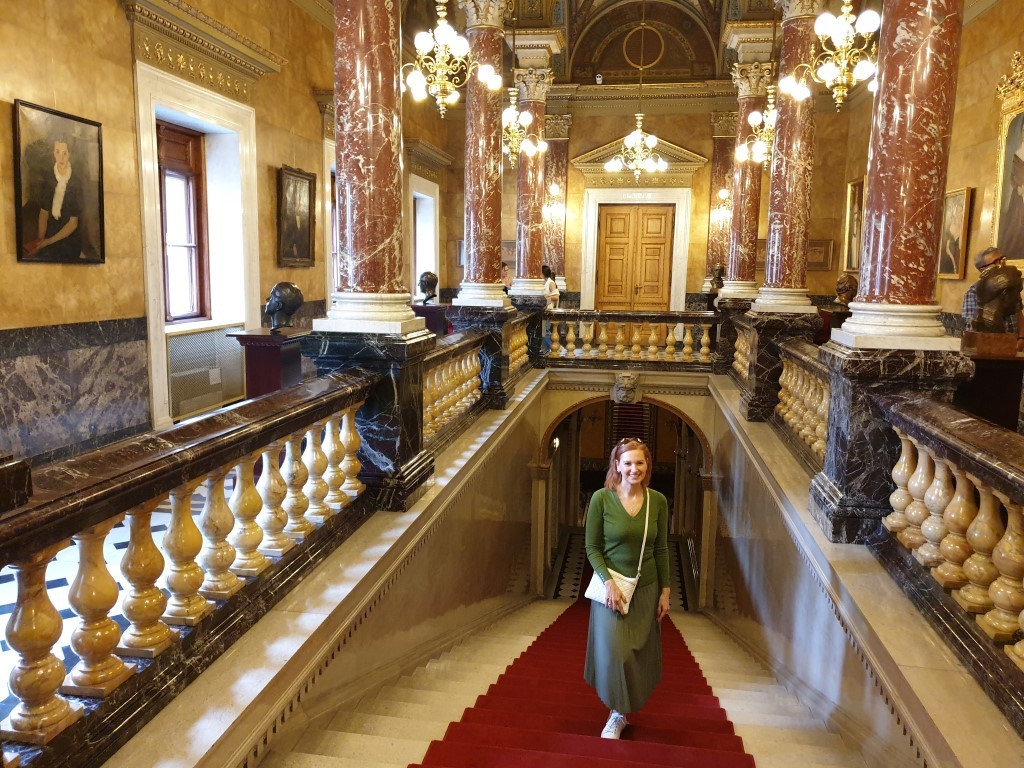
The upstairs gallery opening from the Royal Stairs is one of the Opera’s most beautiful rooms.
The Royal Box
The Royal Box of the Auditorium is located in the central part at the back of the auditorium. It has a magnificent view and has the best seats in the Opera House. This box is decorated with allegorical sculptures that represent the 4 main operatic voices: soprano, alto, tenor, and bass.
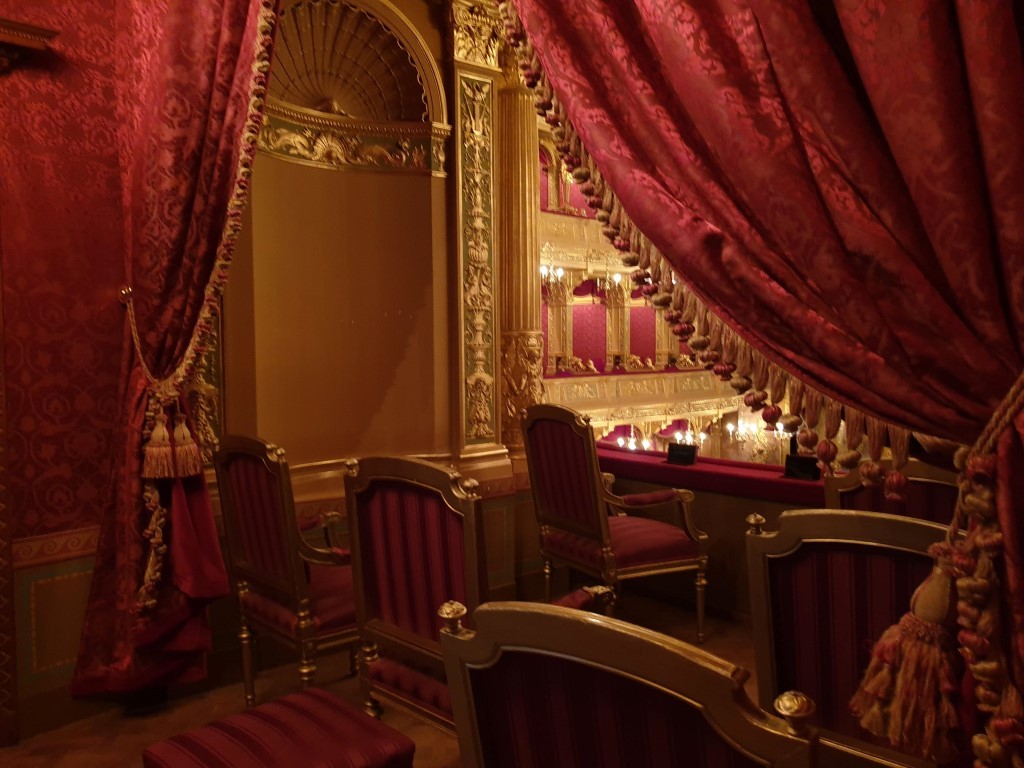
Feszty Bar
How about getting a coffee with cake or a glass of champagne at Feszty Bar? It is a necessary part of a visit to the Opera House in Budapest.
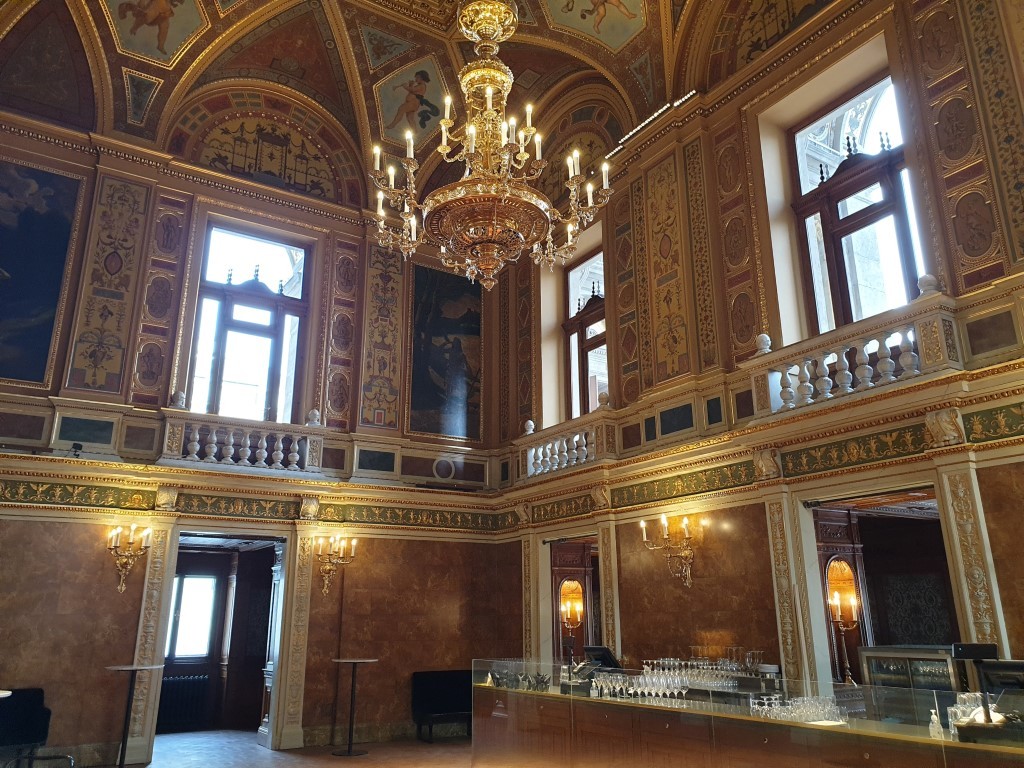
See MORE PHOTOS of the revamped building that has witnessed and survived wars and revolutions, conquerors and various forms of government, occupation and regained freedoms.
Where to stay near the Opera House in Budapest
Hotel Moments Budapest
The beautifully renewed charming four-star boutique hotel is located on the iconic Andrássy Avenue of Budapest, only a few steps away from the Opera House. The hotel offers stylish rooms, wellness facilities and an on-site restaurant. Museums, galleries, bars, restaurants, local and international stores are found all around the former palace.
K+K Hotel Opera
K+K Hotel Opera is located on a quiet side street next to the Opera House. It’s a sophisticated, modern first class hotel which enjoys great popularity due to its welcoming atmosphere, a stylish interior design, and its unbeatable central location. Each one of the stylish guest rooms is larger than average for Budapest and includes premium bedding.
Barceló Budapest
The exclusive design and modern facilities make the new hotel Barceló Budapest the best choice for enjoying a few days of relaxation in the city. Budapest is one of the most surprising cities in the world, which is bursting with history and iconic buildings, and surrounded by the magic of the majestic Danube River, dividing the city into two totally different areas. The hotel is surrounded by museums, art galleries, cafés and restaurants, and is close to the city’s nightlife area.
Have a nice stay in Budapest!
Make sure to follow MyLittleHungary on Instagram or like us on Facebook to get exclusive contents and other exciting announcements.
